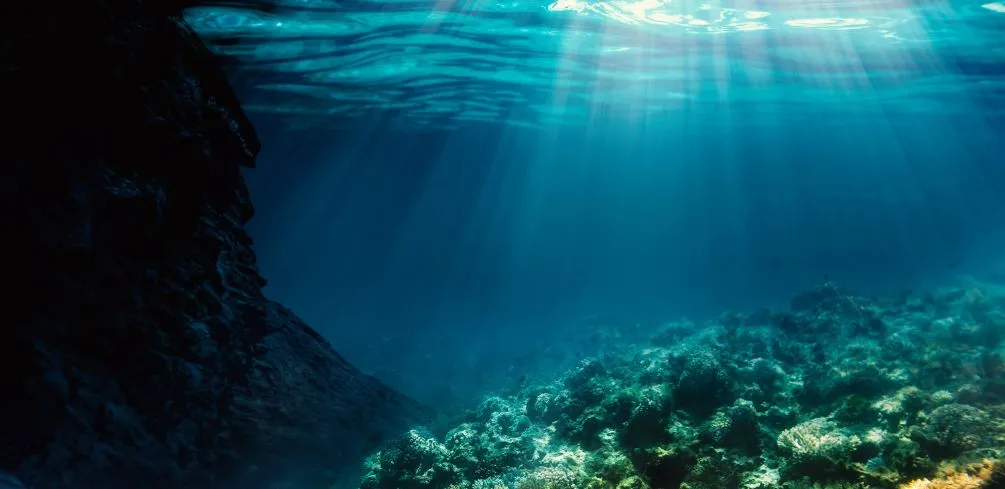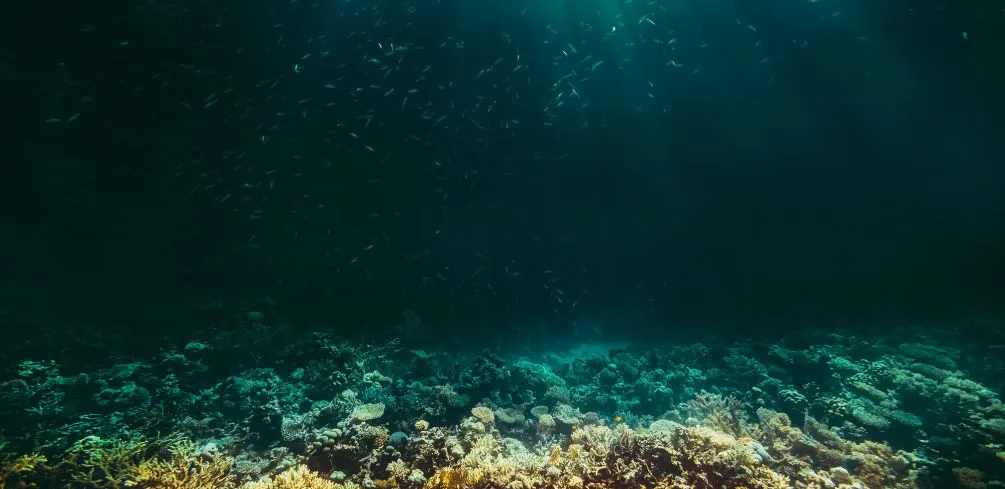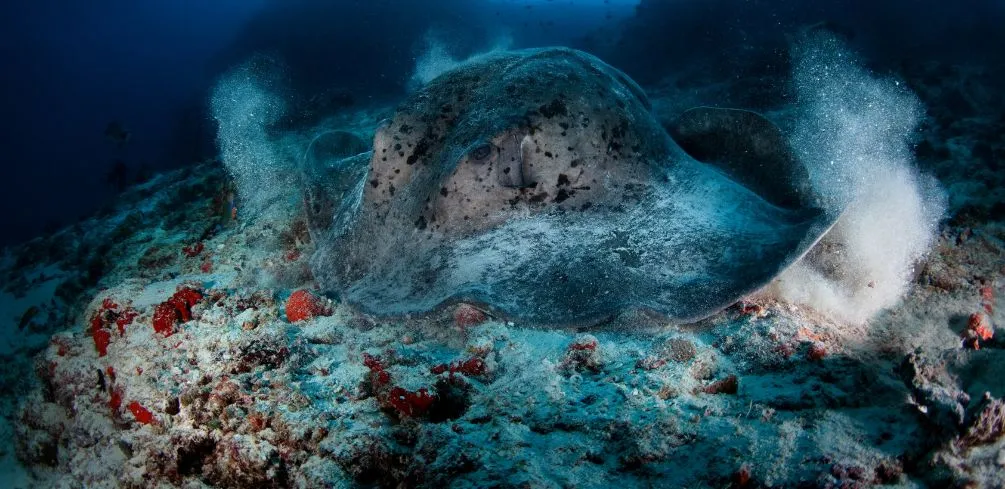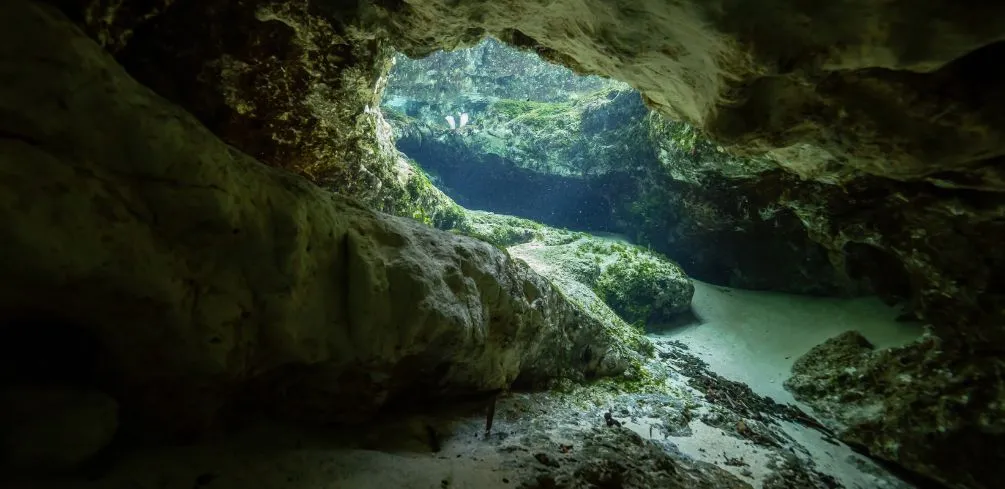Have you ever wondered what lies beneath the surface of the ocean? Unbeknownst to many, beneath the waves are extraordinary and awe-inspiring underwater mountain ranges.
Investigating these underwater mountains is a fascinating endeavor that reveals new information about our planet and its history. In this article, we’ll take a deep dive into the formation of underwater mountains and uncover some amazing facts about our planet.
From volcanic activity to continental drift, there are a variety of processes that contribute to the formation of underwater mountains. We will explore these processes in detail and provide an explanation as to why these mountains form.
We’ll also look at some of the major underwater mountain ranges, such as the Pacific Ring of Fire and Mid-Atlantic Ridge, and discuss how scientists use them to study Earth’s geological history.
So if you’re curious about what goes on beneath the seas, then keep reading! You’ll gain a better understanding of how underwater mountains are formed and get a glimpse into some incredible features of our planet.
What is an Underwater Mountain
Have you ever wondered what an underwater mountain looks like? An underwater mountain, also known as a marine peak or sea peak, is an oceanic mountain that rises from the bottom of the ocean floor. It can range in height anywhere from hundreds of feet to thousands of feet above sea level and extends down several thousand feet below the ocean surface.
Underwater mountains are typically formed when two tectonic plates move apart from each other. As they drift away from each other, molten rock fills in the gap and eventually cools off and hardens, forming an oceanic ridge. These ridges can be found all over the world and are often covered with sedimentary rocks or coral reefs.
It is important to note that although these mountains are called “underwater,” they can actually be found at various depths beneath both shallow and deep waters. Depending on how deep they are located, some of their peaks may even be visible above water during low-tide periods. So while they may not be seen directly by us on land, they still exist beneath our oceans’ surfaces.
An underwater mountain is a fascinating geological formation that helps us better understand how our planet works. By learning more about them, we can gain insight into how Earth was formed, its history, and its future evolution.
Causes Of Underwater Mountain Formation
Now that we have an understanding of what an underwater mountain is let’s take a look at the various causes of its formation. The main cause is the movement of tectonic plates.
When two plates collide, one will often be pushed beneath the other. This action is known as subduction, and it produces oceanic crust. The crust then melts and forms magma which rises up and solidifies to form an underwater mountain range.
The second cause of formation is mantle plumes. These are columns of hot rocks that rise from deep within Earth’s mantle and push against the base of continental shelves forming mountains in the process.
This type of formation usually takes place along mid-ocean ridges where two plates are diverging apart or spreading outwards from each other.
Lastly, there are some cases where large pieces of land break off from continents due to erosion or earthquakes, settle on the seafloor, and become submerged mountains when they are covered by sediment or water over time.
Formed by either natural or man-made forces, underwater mountains can play a major role in shaping our planet’s surface as well as its climate.
They create habitats for many species of aquatic life forms, regulate global temperatures and currents, and provide sources for valuable mineral resources such as oil and gas, among many other things. It’s no wonder why investigating the formation of these majestic landmarks is so essential!
Locations Of Underwater Mountains
Underwater mountains are found in many locations, and the formation of these geological features depends on the ocean depths and the type of seafloor. There are two main types of underwater mountain ranges: continental shelves and abyssal hills. Continental shelves occur near coastal regions, while abyssal hills form in deep ocean trenches.
When studying the formation of an underwater mountain range, scientists must consider a range of geographical factors. The area’s tectonic plates and seismic activity can affect how an undersea mountain forms, as well as the type of seafloor on which it rests.
Additionally, the shape and size of an underwater mountain range can be affected by surface currents and nearby land masses.
By understanding the locations where underwater mountains form, geologists are able to better comprehend their composition and origin. This knowledge can be used to benefit humanity by helping us to better understand our changing environment, predict natural disasters, and monitor climate change.
Exploration Techniques for Undersea Mountains
Exploring underwater mountains can be a difficult and complex process. To get a more thorough understanding of their formation, marine scientists use a variety of oceanic exploration techniques. From deep sea mapping to sonar imaging, these methods provide invaluable insight into the formation of underwater mountains.
Submarine exploration is one of the most commonly used techniques for studying undersea formations. By deploying mini-subs to investigate the seabed in detail, researchers are able to gain a better understanding of geologic features like mountain ranges.
Sonar imaging is another vital tool in the arsenal of marine scientists since it allows them to map out large areas with high accuracy. Additionally, sonar can be used to detect unusual formations that may not be visible on the surface.
Undersea surveys are also an important part of oceanic exploration and can help identify potential sites for further study. By collecting data on sediment types, water temperature, and other conditions, scientists can determine which areas may have experienced recent changes in topography or tectonic activity that could indicate mountain formation.
With this information, they can begin to piece together how underwater mountains form over time and develop strategies for protecting these unique habitats from human-caused impacts like pollution or overfishing.
Underwater Mountain Implications For Marine Life
The formation of underwater mountains has far-reaching implications for marine life and ocean ecology. The changes in ocean topography that occur as a result of this process can create new habitats as well as disrupt existing ones. This can significantly impact the surrounding area’s biodiversity, both in terms of species diversity and population size.
For example, the formation of an underwater mountain can bring a wealth of new food sources to the region, potentially allowing deep sea creatures to thrive in areas where they previously had limited access to resources.
On the other hand, it can cause disturbances to exist ecosystems by creating barriers between populations and reducing nutrient availability. This can have devastating effects on marine life, resulting in decreased genetic diversity and reduced population sizes.
As these changes take place over time, they can affect not only individual species but entire communities. Thus, it is important to understand how this process affects our oceans and their inhabitants so that we may better protect them.
By studying the implications of underwater mountain formation on marine life and ocean ecology, we can ensure that our oceans remain healthy and biodiverse for generations to come.
Frequently Asked Questions
What Is The Average Depth Of An Underwater Mountain?
Diving deep down into the depths of the ocean, we uncover an awe-inspiring phenomenon: the formation of underwater mountains. These majestic mountain ranges are awe-inspiring in their scope and complexity, with a range of depths that can stretch from shallow to staggeringly deep.
But what is the average depth of an underwater mountain? To answer this question, one must explore the depths of the ocean floor and understand how these formations take shape.
Underwater mountains are formed due to geological processes such as continental drift or subduction zones. The depth at which these features form can vary greatly depending on their location and formation process.
On average, an ocean mountain’s depth is generally about 3,300-4,500 meters below sea level—a staggering feat for any formation! However, there are some exceptions to this rule; some mountains can reach depths even greater than 6,000 meters!
When looking at the ocean floor as a whole, it’s clear that underwater mountain depths vary widely depending on their environment and formation process. This means that while analyzing individual cases can be useful for understanding particular formations, understanding average ocean mountain depth requires looking at a larger sample size.
While it may be difficult to pinpoint an exact figure for average underwater mountain depth without further study, it’s safe to say that they tend to range between 3,300-4,500 meters below sea level.
With its complex geology and stunning landscapes, studying the depths of our oceans can help us gain insight into its many wonders. By exploring both individual cases and larger samples, we can begin to understand more about how these majestic formations take shape—and just how deep they truly go!
How Long Does It Take For An Underwater Mountain To Form?
I’m sure you’ve wondered how long it takes for an underwater mountain to form. If you’re interested in learning more about the formation timescale and process of mountain formation underwater, then you’ve come to the right place.
The formation of underwater mountains can take a very long time, depending on various factors such as location and geology. Generally, it can take millions of years for an underwater mountain to form due to its complex nature and the slow process of erosion.
Mountain formation is affected by plate tectonics as well as other geological forces, which cause the shifting of the ocean floor over time and result in the building up of sedimentary material that eventually forms a mountain.
It’s important to recognize that each mountain formation process is unique, so there is no definitive answer for how long it takes for an underwater mountain to form. Factors such as seismic activity and sediment accumulation also play a major role in determining how quickly a mountain will form.
Plus, shifts in ocean currents can create additional changes that affect the formation process. All these factors combined make it difficult to accurately predict when an underwater mountain will be formed.
Understanding the complexity involved in forming an underwater mountain helps us appreciate their beauty even more – they are truly amazing feats of nature! To learn more about this fascinating phenomenon, consider doing further research into the specifics of how mountains form underwater and what processes contribute to their creation.
Are There Any Known Underwater Mountain Ranges?
When thinking of mountains, the first thing that usually comes to mind is the snow-capped peaks of the Rocky Mountains. However, there are also underwater mountain ranges that can be found in our oceans and seas. Are there any known underwater mountain ranges?
Yes – a number of underwater mountain ranges have been documented by scientists. These include oceanic mountain ranges such as the mid-ocean ridges and submarine mountain ranges like abyssal hills and seamounts.
The mid-ocean ridges are long chains of underwater volcanoes that form when two plates drift apart, and molten rock rises up from deep within the Earth’s mantle. Abyssal hills are formed when sediment accumulates over time and eventually forms a small mound on the seafloor, while seamounts are created by volcanic activity or tectonic uplift.
These underwater mountain ranges provide an array of habitats for many species of fish, plants, and invertebrates, making them important ecosystems that should be protected. In fact, researchers have discovered some fascinating creatures living near these underwater mountains that were previously unknown to science!
The Pacific Ring of Fire is a region of the Pacific Ocean that is home to some of the most powerful and active volcanoes on Earth. It stretches from the west coast of the Americas to the east coast of Asia and includes 452 volcanoes that have been active in the last 40 million years.
Many of these volcanoes are located in the form of undersea mountains, which are also known as seamounts.
Aside from the volcanoes, the Pacific Ring of Fire is also home to a network of deep-sea trenches, which are formed when one tectonic plate is pushed beneath another. These trenches can reach depths of up to 10,000 meters below sea level, making them some of the deepest points on Earth.
The Pacific Ring of Fire is home to many unique species of marine life, as well as valuable minerals and resources that can be found in its depths. It is over 25,000 miles.
Understanding more about these unique environments will help us better protect them for future generations.
How Can Underwater Mountains Affect Ocean Currents?
Investigating the formation of underwater mountains can be like unlocking a secret door to understanding how the ocean works. Underwater mountain ranges can have a profound effect on the way ocean currents move, which in turn affects sea levels, ocean topography, and water flow dynamics.
Here are three ways that an underwater mountain range can affect ocean currents:
- Flow Obstruction: Underwater mountains obstruct and divert the paths of ocean currents, either by slowing them down or forcing them to change direction. This can lead to significant changes in sea level, as well as other changes in water flow dynamics.
- Tidal Interaction: Underwater mountains interact with tidal forces, creating areas of eddy currents where the tide is weaker or stronger than usual. Depending on their size and location, these eddies can significantly alter the overall pattern of ocean current movements.
- Temperature Variation: As water flows around an underwater mountain range, it experiences different temperatures due to differences in depth and exposure to sunlight. This temperature variation can cause significant changes in the direction and speed of certain ocean currents, leading to further changes in sea level and topography.
Understanding how underwater mountain ranges affect ocean currents is essential for predicting how climate patterns will change over time.
By studying how these formations impact water flow dynamics and other aspects of marine ecosystems, scientists can gain insight into potential future scenarios for our oceans – knowledge that could prove invaluable as we strive to protect this incredible resource for generations to come.
Are There Any Risks Associated With Exploring Underwater Mountains?
Exploring underwater mountains can be an exciting opportunity for adventurous divers, but there are certain risks associated with this activity. From hazardous ocean conditions and unpredictable mountain terrain to the potential dangers of deep sea exploration, it’s important to be aware of the potential risks involved in underwater mountain exploration.
When engaging in any kind of diving activity, safety should always be the top priority. Ocean hazards like strong currents, choppy waves, and sharp rocks can all pose a threat to divers exploring underwater mountains.
Divers must wear protective gear such as wetsuits and flippers to help minimize the risk of injury. In addition, marine environments can contain a variety of potentially dangerous creatures, so it’s important for divers to know what sorts of wildlife inhabit their chosen dive site before they go under.
Underwater explorers must also consider the impact their activities may have on the delicate marine environment. Despite advances in modern technology, human presence can still damage fragile coral reefs and other sensitive areas around underwater mountains. It’s important for divers to adhere to local regulations when exploring these sites so that they don’t inadvertently cause harm or disruption while they’re down there.
By taking into account all these factors – from diving safety and ocean hazards to environmental preservation – divers can ensure that their exploration of underwater mountains is both safe and respectful of the natural environment around them.
Conclusion
It is truly remarkable to witness the formation of an underwater mountain. Being able to explore its depths and understand the processes that have shaped its creation is a humbling experience. Despite all of our knowledge, there are still so many unknowns when it comes to these mysterious formations beneath the waves.
The power of nature never ceases to amaze us. As we continue to explore these underwater mountains, we must also be aware of any potential risks associated with them. While some people may view this as a thrilling adventure, it is important to remember that the ocean can be unpredictable and potentially dangerous in certain scenarios.
It is inspiring to think about how long it takes for an underwater mountain to form and how much effort Mother Nature has put into creating something so majestic. We must always remember that we are visitors in her domain and take care not to disturb her delicate balance in any way.






